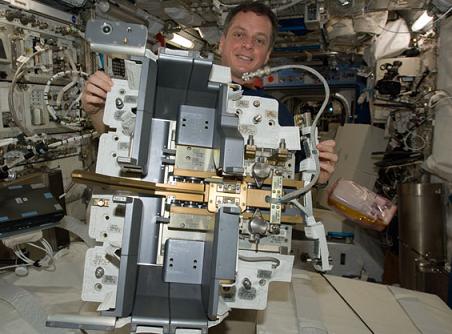
Astronaut T.J. Creamer, Expedition 22 flight engineer in the Kibo laboratory of the International Space Station, January 4, 2010.
While Captain James T. Kirk seemed to be very comfortable sending messages by way of his hand held Communicator, NASA astronaut T.J. Creamer is just as comfortable tweeting…from outer space. In a move that was literally out of this world, Creamer became the first person to tweet from a location other than the planet Earth.
Through his Twitter account (Astro_TJ), he sent the following tweet from the International Space Station (ISS) on January 22, 2010:
“Hello Twitterverse! We r now LIVE tweeting from the International Space Station — the 1st live tweet from Space! ![]() More soon, send your ?s”
More soon, send your ?s”
Until now, NASA astronauts had no internet (world wide web) access. They would have to email Twitter messages to Mission Control, in Houston, and someone would transfer the messages to their Twitter accounts. The ISS crew can now utilize a laptop that has a remote desktop connection to a computer on the ground for private internet access. The astronauts are subject to the same internet usage guidelines that government employees must abide by here on Earth.
